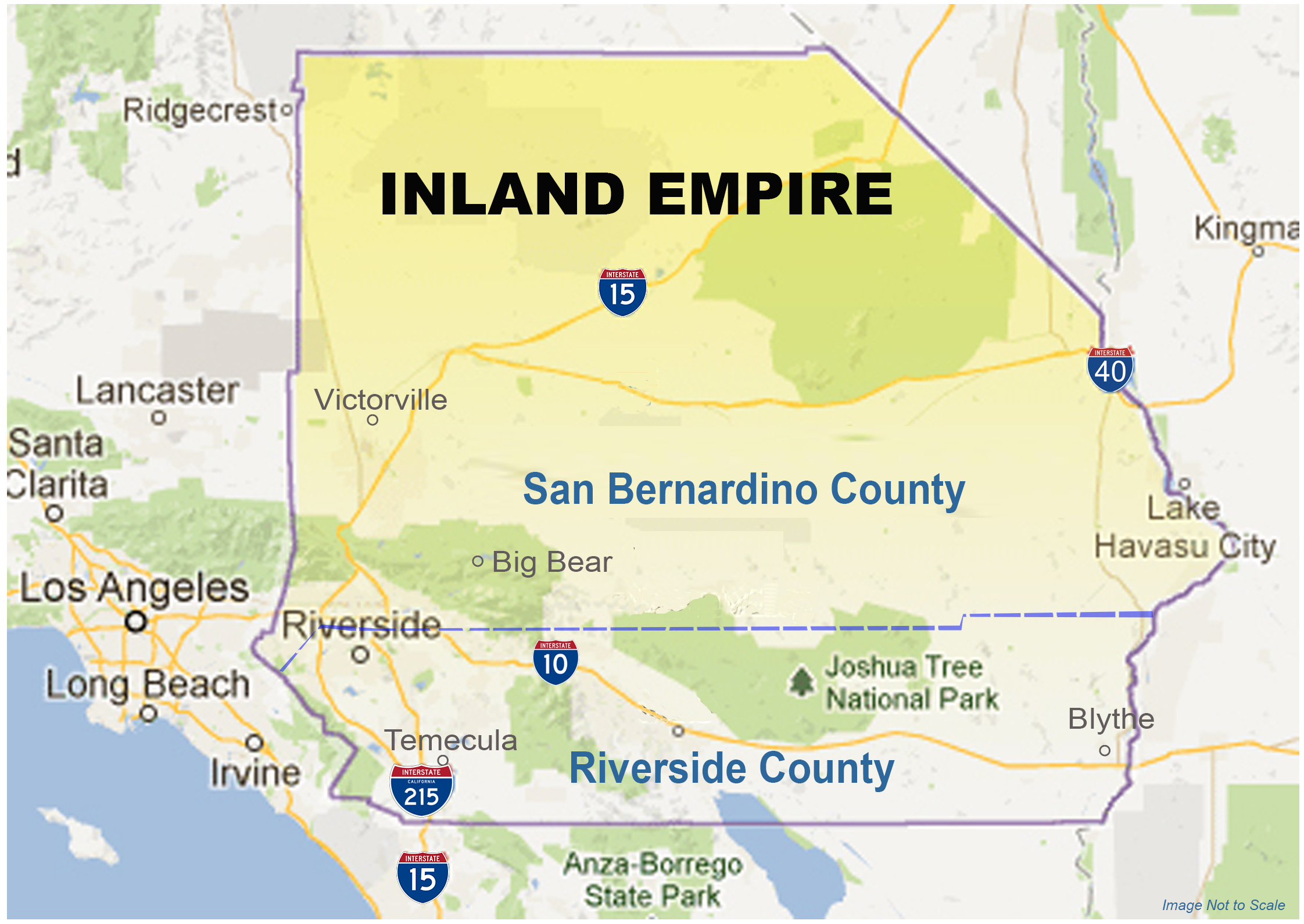
Data, Concerns & Opportunities
Suffice it to say that 2020 has been unlike any other year. And, certainly with all the pandemic related challenges it could have been much worse for SoCal’s Inland Empire retail real estate market. Fortunately, this industry is filled with positive, tenacious individuals, including our team at Progressive Real Estate Partners, who are constantly turning lemons into lemonade and as a result adeptly navigated the many twists and turns over the past year.
Looking back to April and May there was substantial concern there would be a massive number of retail failures by summertime. While there have been some, a large number of businesses that we thought might close were able to adjust and hold on. This was largely as a result of cooperative landlords, federal stimulus, BUT it was mostly due to the incredible perseverance and resourcefulness of our region’s retailers.
If you are someone who operates a retail store, you are AWESOME! I admire your tremendous effort, creativity, and the risks you and your employees have had to endure during this enormously challenging time – Thank you!
But we are not out of the woods yet and whether you are a landlord, tenant, lender, or city official, here are some thoughts for you to consider as we look ahead to the new year.
Our Starting Point for 2021
Retail Vacancy Rate: The Inland Empire Retail Vacancy Rate has increased from 6.8% a year ago to 8.1% today. It has stood at 8.1% for much of the 2nd half of 2020.
Composition of Vacancy: Approximately 84% of the current vacancy is in spaces larger  than 10,000 SF which is mostly attributable to the closing of several junior and big box retailers. Sears; Kmart; 24 Hour Fitness; Bed, Bath & Beyond; Nordstrom and Pier One were amongst those that gave up substantial amounts of space.
than 10,000 SF which is mostly attributable to the closing of several junior and big box retailers. Sears; Kmart; 24 Hour Fitness; Bed, Bath & Beyond; Nordstrom and Pier One were amongst those that gave up substantial amounts of space.
Industrial Absorption: As the West Coast’s hub of distribution, the Inland Empire industrial market continued to soar with 21.1M square feet of industrial space absorbed in the past 12 months largely driven by the increased demand for e-commerce. That’s a lot of space and the 8th year in a row of 18M+ SF of positive absorption!
Retail Investment Sales Volume: Inland Empire retail investment sales volume is off 52% in 2020 compared to 2019 with over 70% of the volume occurring in single tenant assets.
Unemployment Rate: The Inland Empire unemployment rate stood at 9.2% in November compared to 4% at the beginning of the pandemic. According to the UCR Economic Forecasting Center, 44% of the jobs that have not recovered are in the Leisure & Hospitality Sector which will likely improve significantly once the vaccine is widely distributed.
Median Housing Price: Median home prices are up by 12% year over year as of the end of the 3rd quarter 2020 to $412,000. Although median can be a misleading figure, even if you assume an 8% increase in value on a $350,000 home, that is a $28,000 increase in home equity which is a lot of money considering the household income level to support that home is about $60K per year.
Population Growth: Population growth continues to trend at about 1.15% which results in an additional 50,000 people per year living in the Inland Empire. Importantly, this is about twice the rate for the U.S. and compares to virtually a zero growth rate for CA as a whole demonstrating the resilience of the market.
What Concerns Me as We Enter 2021?
Viability of Shop Tenants: Which shop tenants will prevail and which will not? It is my belief that most small businesses, including operators of the many franchise concepts that dominate shop space, will swim as hard and as long as they can to cross the “Pandemic River”. The question is can they get to the other side or does the river just get too wide? We probably won’t know until the end of the first quarter 2021.
Leasing Activity: There has been a substantial decline in new retail leasing activity throughout the year. According to Costar, we just had 4 consecutive quarters of negative net absorption (total space leased minus space that went vacant), although the 4th quarter was negative less than 100,000 SF in sharp contrast to the 2nd quarter which was negative 1.25M SF. That being said, Costar’s models predict negative net absorption of 1.6M SF in the first 6 months of 2021. Truthfully, this is just a wild guess and we won’t know until it happens. I could easily see these figures being dramatically wrong if people receive the vaccine and substantial optimism returns to the marketplace.
Financing Availability: We have heard about plenty of lenders who say they are lending on retail, but once they give you the terms & conditions, it would be less insulting if they just said they were not making loans on retail property. And when I say lending, I am referring to traditional 65% LTV, 25 to 30 year amortization, and a competitive interest rate in about the 4% range. We have had multiple transactions where the lender pulled the plug or re-traded very late into the deal. I just wish commercial lenders understood retail better. It is the time of the year to make wishes, isn’t it?
Tax Code Uncertainty: Could the 1031 exchange be eliminated? Will the step-up in basis be eliminated? Will capital gains rates go up substantially for high net worth individuals? At this time, I am not going to comment on the potential impacts of these possible changes, but will just say that uncertainty is never good for business and I think that many investors will spend 2021 trying to navigate and predict potential tax code changes.
Where Will There Be Opportunity?
Investing in Multi-Tenant Retail Centers: This year was dominated by the single tenant investor. In the second half of 2020 a whopping 77% of the retail investments were single tenant transactions. Since February 1, 2020 there has not been any retail center sold over $10M. As a result, prudent investors are going to find opportunity investing in bread & butter multi-tenant retail centers that will trade north of a 6.5% cap rate with market or below market lease rates and historically low interest rates on their debt.
Restaurant Redevelopment: Purchasing a sit-down restaurant and either reusing it, renovating it into another use, or knocking it down and utilizing the property in another way has been an investment opportunity over the past few years and will continue to create opportunities for at least the next few years.
Big Box Redevelopment: What to do with those vacant retail boxes? Many are encumbered by zoning, CC&R’s, or physical restrictions such as a theater building that sits in the middle of a retail development. Creativity, capital, cooperation, and composure (patience doesn’t begin with “C”) are likely going to be the keys to approaching these projects. The Food Hall/Public Market has been one idea that showed how these spaces can be utilized. Just as the Food Hall is a euphemism for Food Court, I think we are going to see a rebirth of the “swap meet”, but it won’t be the “swap meet” of the 90’s, but instead will be a much nicer and more creative use of interior space to create another sense of place that communities so appreciate.
Retail/Commercial Land to Residential Development: Whenever I get a call from a land owner who wants my suggestion regarding their property, the first thing I consider is whether the land can be used for residential. The reality is that unless a project is driven by a specific retailer there is little need for additional retail development at this time. Unless the property is a hard corner, freeway adjacent or situated in a very high profile location it is likely going to be more valuable for residential use. There are certainly exceptions. For example, if the parcel is under 3 acres or located in a secondary/tertiary market, then it may not pencil for residential use. But the vast majority of land parcels that are zoned commercial must be analyzed for some form of residential use. This also requires working with City officials to educate them on the current market dynamics and demand.
Ground Up for Single Tenant Retailers: Drive Thru Restaurants, Gas Stations, and Grocery Stores, are amongst the uses that are expanding and frequently require a custom building. There will continue to be opportunity for the select group of retail developers who have strong tenant relationships.
Summary
I am a realistic optimist as we enter 2021. In spite of the many challenges we faced during 2020, our team stayed focused, adapted and successfully served our clients. PLUS we learned a lot of valuable lessons proving that you really can turn lemons into lemonade.
We look forward to working with so many of you in 2021 and we wish everyone a Happy, Healthy & Prosperous New Year! Feel free to reach out to me at brad@progressiverep.com if we can be of service in any way.